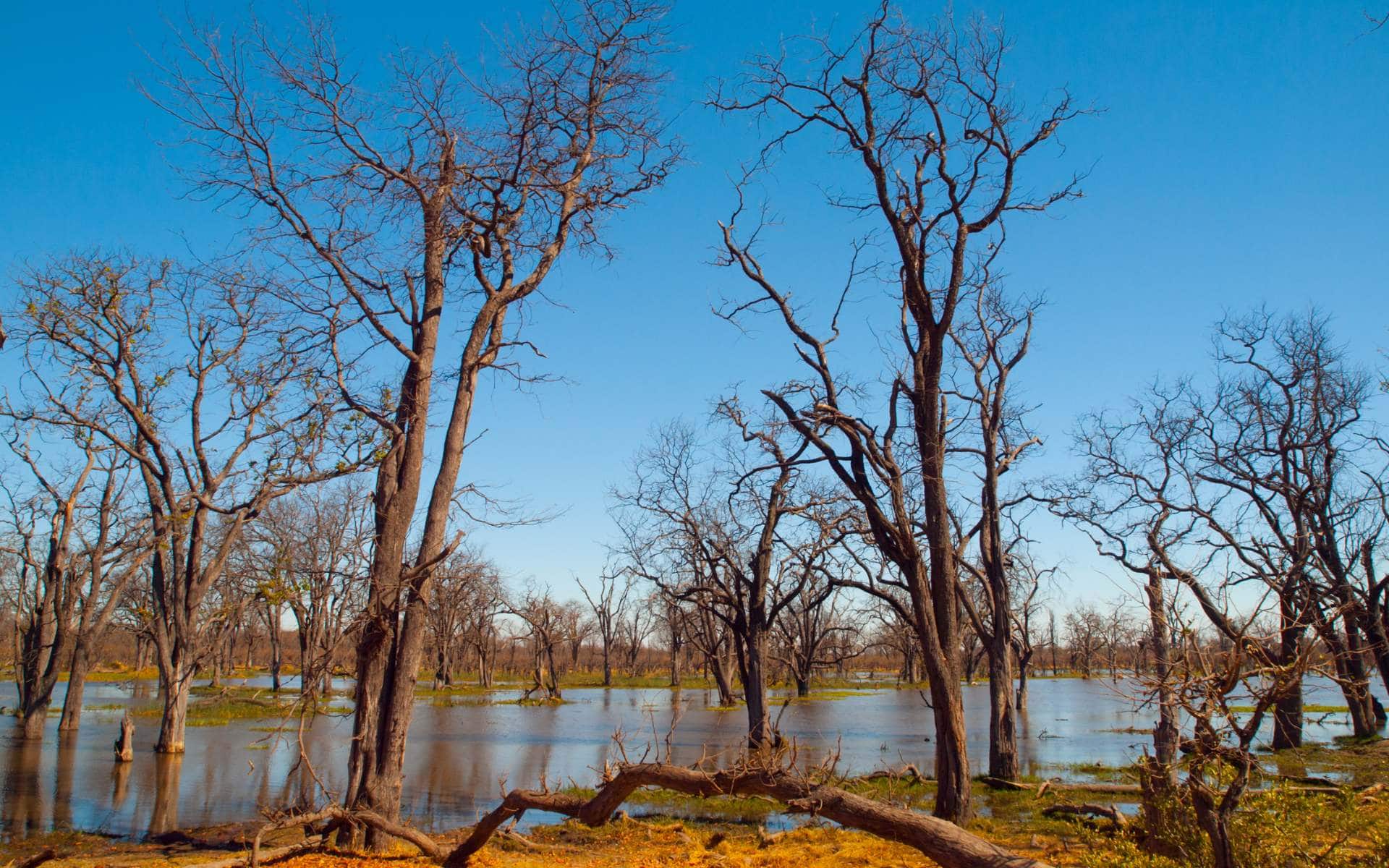The Okavango Delta in Botswana is one of the most unique wetland ecosystems in the world. Unlike most river systems, which drain into the ocean, the Okavango River empties into the Kalahari Desert, creating an enormous inland delta. The annual flooding of the Okavango Delta is a fascinating natural phenomenon, shaped by distant rainfall patterns and complex hydrological processes.
The Source of the Floodwaters

The water that floods the Okavango Delta does not originate in Botswana. Instead, it comes from the highlands of Angola, where seasonal rains feed the Okavango River. This river flows southeast through Namibia before reaching Botswana. The journey from Angola to the delta takes several months, meaning that while Botswana experiences its dry season (May to October), the delta is at its fullest as a result of rain that fell thousands of kilometres away.
The Delayed Flooding Effect
The Okavango River’s floodwaters typically reach Botswana between March and June, peaking between July and August. This delay is a result of the river’s slow-moving flow and the vast network of channels, islands, and floodplains that absorb and redistribute the water. Unlike conventional flooding, where water levels rise rapidly after rainfall, the Okavango Delta experiences a gradual and sustained flood pulse.
How the Flood Transforms the Delta

As the floodwaters spread, they create a shifting mosaic of seasonal floodplains, channels, lagoons, and islands. The delta’s size fluctuates significantly, expanding from about 6,000 km² in the dry season to over 15,000 km² at its peak. This seasonal flooding supports an extraordinary variety of wildlife, bird species, and plant life, making the delta one of Africa’s most important biodiversity hotspots.
Wildlife Adaptations to the Flooding Cycle
The annual floods drive unique ecological adaptations. Species such as the red lechwe and sitatunga antelope have evolved to thrive in flooded environments, with elongated hooves adapted for moving through waterlogged terrain. Many fish species migrate into the newly inundated areas, providing a food source for birds like African fish eagles, herons, and storks. Predators, including lions and leopards, adjust their hunting strategies to navigate the changing landscape, and in some places, they will hunt in the water.
Why is the Okavango Delta a UNESCO World Heritage Site?
Because of its ecological significance, unique hydrology, and rich biodiversity, the Okavango Delta was designated a UNESCO World Heritage Site in 2014. Conservation efforts continue to protect this fragile ecosystem from threats such as habitat loss, climate change, and upstream water diversions. For safari enthusiasts, the flood season (May to October) offers unparalleled opportunities for mokoro (dugout canoe) excursions, boat safaris, and exceptional wildlife viewing. The transformation of the landscape attracts a high concentration of animals, making it one of the best times to visit the delta.